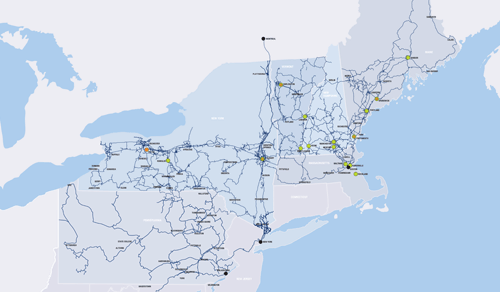
Since the pandemic began, K-12 schools, colleges, and universities have been forced to rely on remote learning. Most educational institutions have chosen to begin the new school year with either online learning or a combination of online and classroom instruction.
The Massachusetts Teachers Association released a statement declaring that while, ideally, students will return to campus, unless their safety can be assured, remote learning could continue indefinitely. MTA also emphasized that even when learning occurs in the classroom, reliable Internet access for students and teachers is essential.
Even before the pandemic, online learning was becoming crucial because it provides greater access to specialized education programs and allows for personalized instruction. However, optimal online schooling isn’t possible without a modern network.
Traditional wide area networks (WAN) may not be up to the task of providing enough bandwidth for K-12 and university education. Software-defined WAN (SD-WAN) can meet the challenges of remote learning programs and offers many other advantages.
Here are 5 benefits SD-WAN brings to educational institutions:
1) Resiliency
Any network an educational institution uses must be resilient. Instruction time is at a premium. Students have only so many hours in the school day and days in the school year. Students can’t afford to waste class time waiting while connections buffer.
SD-WAN provides the resiliency and redundancy needed to support educational institutions. SD-WAN delivers low-latency connectivity. Traffic can be navigated around network issues to ensure availability. Application load sharing, link balancing, and link failover all work together to keep online classrooms up and running.
2) Operational efficiency
 SD-WAN keeps the network running optimally, reducing the risk of outages and data loss. Educational institutions can use SD-WAN to make the most of their bandwidth. Every student can take advantage of online learning without having to wait their turn to connect.
SD-WAN keeps the network running optimally, reducing the risk of outages and data loss. Educational institutions can use SD-WAN to make the most of their bandwidth. Every student can take advantage of online learning without having to wait their turn to connect.
With SD-WAN, students can use bandwidth-heavy educational applications. Automated capabilities in SD-WAN balance loads so K-12 and university students have fewer limits on the educational software they use or on data-heavy video conferencing platforms.
3) Security and compliance
Educational institutions must protect students’ personally identifiable information that is contained in digital school records. Colleges and universities need to secure data generated by research studies, as well as the intellectual property of students and faculty.
SD-WAN has built-in security features that protect the network and the data it transmits. Intrusion detection prevents malicious traffic and keeps unauthorized users from gaining access to student records. With SD-WAN, educators can also control K-12 students’ use of devices, limiting their access to include only appropriate websites and applications.
4) Simplified management
 Educational institutions are not focused on managing the network. Management and maintenance tasks take time away from developing new ways to use technology in administration and instruction. Schools need a solution that is easy to implement and maintain.
Educational institutions are not focused on managing the network. Management and maintenance tasks take time away from developing new ways to use technology in administration and instruction. Schools need a solution that is easy to implement and maintain.
SD-WAN takes only a few hours to deploy, compared to weeks or months for a traditional WAN. Many features are automated, such as network alerts and analytics reporting. Educational institutions gain full visibility into the network through SD-WAN orchestration, even when multiple campuses and endpoints are being connected.
5) Network quality
To get the most out of SD-WAN, schools, colleges, and universities need to support it with a fast, powerful, and reliable network. A high-speed fiber optic network helps schools to achieve low latency and superior bandwidth through their SD-WAN solution.
If the SD-WAN provider owns and operates the network it uses, educational institutions will be assured of accountability for network performance.
SD-WAN for Education
When choosing an SD-WAN provider for education, it helps to work with one that is familiar with the network requirements of schools, colleges, and universities. Remote learning and online instruction place unique demands on a network.
FirstLight specializes in providing connectivity solutions for education. We offer SD-WAN for K-12 and higher education that is supported by our extensive high-speed fiber optic network. FirstLight also participates in the E-Rate program, ensuring that schools have access to affordable internet so every student can stay connected.
Get more details on SD-WAN for education. Read our white paper 5 Things Education Organizations Should Know About SD-WAN.






















